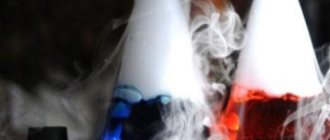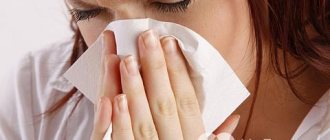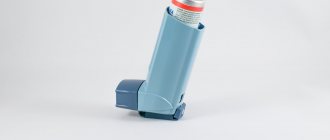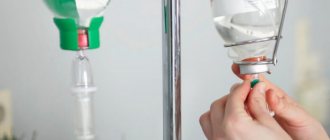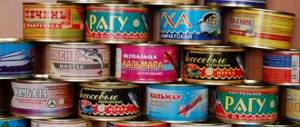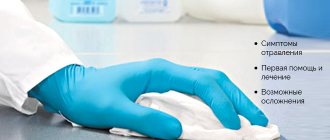Mushroom poisoning
Mushrooms account for approximately 4% of all food poisonings, so everyone needs to know what to do if they have mushroom poisoning. The serious consequences of such intoxication are much more dangerous than the symptoms of other poisonings, which are more common. Thoughtless consumption of mushrooms with food, their improper preparation, purchase or self-collection are the main reasons for the development of intoxication in the body.
How does mushroom poisoning occur?
Biologists have described over 3,000 species of various fungi. Of these, only 400 species are edible; all the rest pose a serious health hazard. Several species are permanently poisonous, and all the rest become poisonous when consumed raw or with improper preparation technology and therefore are called conditionally edible.
The most severe poisonings can be caused by pale, white and spring toadstools. If you accidentally eat just one quarter of their cap, severe poisoning occurs that can lead to the death of an adult. Toadstools are dangerous in any form, since the poison amanitin they contain does not lose its toxicity either when dried or when exposed to high temperatures.
Muscarine, which is contained in fly agarics and whitish talker, is also very dangerous for humans.
In addition to the above, severe poisoning is caused by the following types of fungi:
- stinky mushroom;
- pig;
- false honey mushrooms;
- parterre mushroom;
- satanic mushroom.
Incorrect cooking technology can cause poisoning from mushrooms, morels, strings and milk mushrooms.
Classification of mushrooms
The venom of the toadstool is not destroyed by heat treatment and is fatal to humans.
Depending on the degree of edibility, all mushrooms can be divided into 3 groups:
- certainly edible (boletus, porcini mushrooms, boletus, champignons and others) - do not require pre-treatment before cooking;
- conditionally edible (those mushrooms in which a milky juice is released from the pulp, which has a burning taste - milk mushrooms, volushki, svinushki, etc.) - require preliminary soaking in running water or cooking, during which the toxins contained in the juice are removed;
- inedible mushrooms (fly agaric, toadstool, gall mushroom, etc.) - the poison from them is not removed even during pre-treatment and is fatal to humans.
Symptoms of mushroom poisoning
The first signs of mushroom poisoning usually appear several hours after eating them. The duration of the latent period depends on the type of poisonous mushrooms, their quantity, age, body weight, alcohol consumption and other reasons. For example, in case of poisoning with toadstool, the incubation period can last up to 6-7 hours, and when eating lepiot or cobweb, it extends to several weeks.
When poisoning with mushrooms, regardless of their type, some general symptoms are observed that are similar to those of other foodborne diseases. These include:
- cramping abdominal pain;
- nausea;
- vomit;
- diarrhea.
In addition, there are signs characteristic of mushroom poisoning.
In case of poisoning with toadstool, diarrhea and vomiting are profuse, they can occur up to 30 times per day. Due to disturbances in the hemostatic system, blood is often present in the stool, and vomit takes on the appearance of coffee grounds. Victims experience convulsions and increased cardiovascular and respiratory failure. The functions of the kidneys and liver suffer, up to the development of renal and liver failure, which is the cause of a coma, and subsequently the death of patients.
In addition to the general symptoms, poisoning with talkers and fly agarics is characterized by the following signs:
- lacrimation;
- increased salivation;
- constriction of the pupils;
- increased sweating;
- bronchospasm accompanied by shortness of breath;
- bradycardia;
- hypotension;
- convulsions;
- delusions and hallucinations;
- coma.
In case of panther fly agaric poisoning: dilated pupils, tachycardia, dry skin and mucous membranes.
Poisoning with morels and strings is characterized by the presence of convulsive syndrome, the development of toxic hepatitis, and damage to the spleen and kidneys. In the blood of patients, the membranes of red blood cells are destroyed (hemolysis), as a result, the urine becomes red.
Symptoms of mushroom poisoning in children are more pronounced, since the children's body is more sensitive to the effects of toxins.
Why are mushrooms poisonous?
The ability of mushrooms to accumulate mycotoxins from the environment, poisons contained only in mushrooms, makes them potentially dangerous to humans.
Poisonous substances of mushrooms:
- Amanitin is the most poisonous substance contained in mushrooms. It blocks the functioning of cells, leading to their death. The cells most affected are the liver and kidneys.
- Muscarine ─ acts selectively on nerve endings.
- Muscaridine is an alkaloid that disrupts the functionality of the digestive and nervous systems.
- Fallotoxins are a group of poisons that affect the plasma of cells. Hepatocytes (liver cells) are most susceptible.
Poisonous mushrooms, depending on the type, have different concentrations of toxic substances and the strength of their effect on the human body.
1st category ─ poisons of local or local action. They affect the gastrointestinal tract, disrupting the digestive processes. The effects of poisons begin 2 hours after entering the stomach. Symptoms: nausea, unexpressed pain in the epigastric region, general weakness. Edible mushrooms lead to this condition if the technology for their preparation is violated.
Category 2 ─ toxic substances that affect the central nervous system. Symptoms: impaired vision, coordination, speech. The victim experiences hallucinations and memory loss. Against the background of neurological disorders, nausea and increased sweating.
3rd category ─ deadly poisons, which in 90% of cases lead to death. The effect of toxic substances begins a few hours after they are absorbed in the stomach. Symptoms develop acutely. Since the brain is affected, the victim experiences a sharp decrease in all vital functions of the body against the background of a paralytic effect on neurons: failure of the kidneys and liver, cardiac and respiratory arrest.
First aid for poisoning
The appearance of signs of mushroom poisoning is the basis for immediately providing first aid to the poisoned person.
- Rinse the stomach thoroughly. To do this, the patient should be given at least one liter of water to drink, and then, by pressing on the root of the tongue, induce vomiting. Repeat this procedure several times until the rinsing water is clear. This will help to cleanse the stomach as completely as possible of mushroom toxins that have entered it.
- If mushroom poisoning occurs without diarrhea, then the victim should be given 1 tablespoon of castor or vaseline oil.
- To bind toxic substances that have already entered the small intestine, you must take any sorbent, for example Polysorb MP, Smecta or Activated Carbon.
- Place the patient in bed, wrap him warmly, and apply a heating pad to his feet.
- Provide plenty of fluids. You can give strong black tea, mineral or regular water without gas.
Features of providing first aid to children
Mushroom poisoning in children can cause more serious consequences than in adults, due to the fragile child’s body. Symptoms may also become more severe. To the listed symptoms you can add breathing problems, muscle pain and cramps. When providing first aid to a child who has received mushroom poisoning, the following features must be taken into account.
- Use boiled water to rinse the stomach. Potassium permanganate is not suitable in this case, as it can cause a burn to the gastric mucosa.
- For a cleansing enema, a child under three years of age should use a special bulb and boiled water. Adding any substances to it is not allowed.
- Sorbents in the form of activated carbon will be an ideal remedy for a child. This natural remedy has been used for similar purposes for several generations and has no side effects.
- The child should be given drinks in small doses so as not to cause repeated gag reflexes. The water should be still, the best option is to give one tablespoon every 5-10 minutes.
- If the child loses consciousness, lay him down on a hard, flat surface and turn his head to the side. This will avoid blocking the airways with vomit.
We recommend reading:
What's better to sleep in a tent at night?
When is medical attention required?
In case of any mushroom poisoning, self-medication is unacceptable. If you feel even a slight discomfort after eating mushrooms, you must urgently call an ambulance or take the victim to the hospital on your own.
Treatment of mushroom poisoning is carried out in toxicology departments. It includes:
- gastric lavage through a thick tube;
- prescribing a saline laxative;
- carrying out forced diuresis.
In case of poisoning with talkers and fly agarics, the patient is injected with atropine, which is an antidote to muscarine. The dosage of this drug and the frequency of its administration are determined by the doctor.
If necessary, hemosorption is performed using a carbon column.
In addition, therapy is carried out aimed at eliminating damage to the liver, kidneys, nervous and other systems.
Possible consequences
The consequences of mushroom poisoning, especially if the patient does not see a doctor in time, can be very serious. Thus, mortality from poisoning with toadstool occurs in 50-90% of cases. Delayed medical care for fly agaric poisoning causes the death of every second poisoned person.
Severe mushroom poisoning can cause chronic liver or kidney failure, which requires transplantation of these organs.
Mushroom poisoning in pregnant women is dangerous, since toxins from inedible mushrooms can penetrate the uteroplacental barrier and cause damage to the fetus and contribute to spontaneous miscarriage or premature birth.
First aid for mushroom poisoning
- When poisoned by fly agaric, specific toxins muscarine and muscaridine enter the bloodstream. These substances can be destroyed when mushrooms are boiled, but some of them still remain, having a neurotoxic effect on the body. If signs of intoxication are detected (usually they occur 1-6 hours after consuming the mushroom), it is necessary to urgently seek emergency help, rinse the victim’s stomach and intestines, and give plenty of fluids to drink.
- When consuming other conditionally edible mushrooms, symptoms of poisoning may occur after improper preparation of dishes or insufficient heat treatment. What to do in such a situation? You can rinse the stomach by asking the victim to drink 1-1.5 liters of water (in one sitting), with the addition of milk. After this, pressing with your fingers or a spoon on the root of the tongue, you need to induce the urge to vomit. This should be repeated from 3 to five times.
- Lay the patient horizontally and apply warm water bottles or heating pads to the limbs.
- Before doctors arrive, it is necessary to constantly give the victim warm drinks (water, milk, tea).
If it is not possible to call an ambulance, you should independently and immediately take the patient to the nearest medical facility.
[3], [4], [5]
Botulism and its symptoms
Mushrooms that have undergone improper culinary processing, for example during canning, can lead to botulism, a severe infectious and toxic disease that affects the human nervous system. The pathogen, which produces a toxin dangerous to the body, enters along with soil pollution. Thus, it turns out that insufficient or poor-quality processing of products before seaming - poor washing, cleaning or cooking - leads to the entry of botulism toxins into the body.
Symptoms indicating the development of botulism appear in:
The first signs of this disease begin to appear approximately on the second or third day after consuming the preserved food. Botulism is a dangerous and fatal disease, so if you experience any alarming symptoms, you should immediately consult a doctor or call an ambulance.
Rules for first aid for mushroom poisoning
After all procedures have been completed, delivery of the victim to a medical facility continues to be mandatory.
To avoid poisoning, follow the safety rules:
- do not collect unfamiliar or suspicious mushrooms;
- do not buy mushrooms at spontaneous markets from strangers (this applies not only to fresh, but also to dried and canned mushrooms);
- do not eat canned food with swollen lids or signs of fermentation, as well as with a suspicious smell or color;
- cook mushrooms according to all the rules, pre-soaking and boiling them.
Help with mushroom poisoning may not be needed if, while preparing a mushroom dish, you perform a simple and accessible test: throw a peeled and halved white onion into a pan with cooking mushrooms. If there is a poisonous mushroom in the dish, the onion will turn blue. Take care of yourself!
Causes and types of mushroom intoxication
Mushrooms are representatives of living nature that combine the characteristics of both animals and plants. Although this is an incredibly tasty dish, it is not recommended to consume it in large quantities, since they are a difficult-to-digest product for the human intestine. It is especially undesirable for pregnant women and nursing mothers, young children, and the elderly to eat them.
The most common cause of mushroom poisoning is the lack of experience of mushroom pickers, due to which poisonous samples end up on the table and then into the human body. The second most common cause is considered to be improper cooking of mushrooms, especially their conditionally edible representatives.
You can also be poisoned by old mushrooms, or those collected in environmentally polluted places.
There are four types of poisoning by poisonous and conditionally edible mushrooms, which are usually classified according to the type of mushroom.
The first type includes toadstools and poisoning caused by eating them. These inconspicuous mushrooms are very often confused with russula or champignons. Representatives of the pale toadstool contain phalloidins and amanitins, which are strong toxins that, once in the human body, cause severe intoxication, ending in death in most cases. These toxins are not destroyed by any type of processing and are therefore considered deadly.
The second type includes fly agaric mushrooms containing mycoatropine, muscarine and fly poison. This mushroom is easily recognized by its red cap with white spots. But oddly enough, this is not the most poisonous of the fly agarics. Its other representatives are more terrible in this regard: porphyry, white, panther and yellow fly agaric. Children and the elderly, as well as those with heart or kidney problems, most often suffer from fly agaric poisoning. The mortality rate from fly agaric poisoning reaches two to three percent. Death occurs when a large number of mushrooms are eaten and occurs after about six to twelve hours.
The third type includes lines. Their representatives are very similar in appearance to morels, but have a wrinkled, walnut-like cap. The lines contain a strong toxin - helvelic acid, which has a pronounced hemolytic effect. They also contain neurotropic toxins. Deaths from stitch poisoning occur in thirty percent of cases, especially in children.
You should be aware that serious poisoning is also caused by edible mushrooms that are collected in environmentally polluted areas - near factories, along highways, in the Chernobyl Nuclear Power Plant zone. The fact is that mushrooms have the ability to absorb all sorts of harmful and toxic substances and radiation from their habitats. In addition, eating edible but old mushrooms also leads to severe intoxication and, in some cases, death.
Thematic pages > Expert advice > Mushroom poisoning. Prevention. First aid.
Mushroom poisoning. Prevention. First aid.
About 4% of all poisonings occur due to the consumption of poisonous mushrooms. The causes of these poisonings lie in ignorance of these mushrooms and improper preparation. There are classifications of mushrooms
depending on edibility:
1. Unconditionally edible include mushrooms prepared without additional processing (ceps, butter mushrooms, boletuses, fly mushrooms, champignons, etc.)
2. Conditionally edible mushrooms are mushrooms that must be pre-cooked or soaked in running water (before salting) before cooking. These include all mushrooms in which, when broken, milky juice flows out of the pulp, which has a burning taste (svinushki, volnushki, nigella, etc.), as well as mushrooms containing poisonous acids (strings). As a result of pre-treatment, poisonous and pungent substances contained in conditionally edible mushrooms are removed. If toxic substances are not removed, these mushrooms, like poisonous ones, can cause mild and severe poisoning. For stitches, drying for 3-4 weeks is also a reliable method of neutralization. Drying other mushrooms that contain a toxic substance does not eliminate their toxicity.
3. The group of inedible mushrooms includes both poisonous and non-poisonous, but having an extremely unpleasant taste or smell that prevents their consumption (gall mushroom, pepper mushroom, etc.). The number of poisonous mushrooms is relatively small. These include toadstool and fly agarics, the poison of which is not destroyed or removed during heat treatment or salting.
After collection, mushrooms must be immediately processed, and the shelf life of fresh mushrooms should not exceed 18-24 hours at a temperature not exceeding 10? C. It should be remembered that even the best and, of course, edible mushroom, if it is overripe, begins to rot on the vine, or has been left untreated for a long time, can become poisonous.
Prevention of poisoning of children in the forest is especially important. In case of mushroom poisoning, the gastrointestinal tract is primarily affected, which is clinically manifested by symptoms of acute gastroenterocolitis and leads to more or less acute dehydration of the body.
Symptoms indicating mushroom poisoning
Damage to the gastrointestinal tract.
Cramping abdominal pain, nausea, uncontrollable vomiting, frequent loose stools, sometimes 20-25 times a day. Toadstool poisoning is characterized by blood in the stool and vomit the color of coffee grounds.
Damage to the central nervous system.
It manifests itself differently, depending on the type of mushroom. For example, fly agaric gives hallucinations and motor stimulation. At first there is anxiety, and then lethargy and indifference. A transition to an unconscious state is possible.
Damage to the cardiovascular system.
It is expressed in the form of a decrease in blood pressure and an increase in heart rate.
Liver and kidney damage
depends on the type and quantity of mushrooms eaten. In the early stages, oliguria develops, that is, a decrease in the amount of urine. Then comes liver failure, which is characterized by brain damage and jaundice. Severe intoxication leads to hepatic coma. Kidney damage can lead to acute renal failure.
Four types of mushroom poisoning
To type I
include poisoning with toadstool. This is the most poisonous mushroom. In case of poisoning, from 35 to 95% of deaths occur. It is often confused with champignon, sometimes with russula. The poisons contained in the toadstool are not destroyed by high temperatures and acids, so boiling, pickling and other types of culinary processing do not free the mushrooms from their toxic properties. 30 mg of poison is enough to kill an adult.
The first signs of poisoning by toadstool appear quite late - after 8-18 hours, which is typical for this type of poisoning. Headache, dizziness, disturbance of normal vision occur; At the same time, a rapidly occurring cholera-like gastroenterocolitis develops with uncontrollable vomiting and severe abdominal pain. Dehydration occurs: the patient feels intense thirst, weakness increases, loss of voice is observed, and cramps occur, especially in the calf muscles. There is a thickening of the blood and a decrease in urine output up to the complete cessation of urination. Profuse sweat appears, the extremities become cold, their skin becomes bluish, the pulse becomes weak, the temperature drops to 36-35? C. After some time, the attacks disappear (for about two hours), but then resume again; the patient weakens and falls into oblivion. On the 2-3rd day, diarrhea and vomiting become less frequent. At this time, symptoms of hepatic-renal failure appear. The liver becomes enlarged and painful, and jaundice may occur. A comatose state develops, which is characterized by maximum dilation of the pupils, yellowing of the sclera, and a drop in blood pressure.
REMEMBER! In case of poisoning with toadstool, treatment started later than 2-3 days is USELESS!
To type II
include fly agaric poisoning. The fly agaric is known to everyone for its white-speckled cap, but sometimes the cap has a different color, and, according to the color, the fly agaric is called porphyry, panther, yellow and white. The toxic substances in fly agaric are muscarine, mycoatropine, and fly poison.
The picture of fly agaric poisoning develops half an hour or 2-6 hours after its consumption. The victim is bothered by nausea, vomiting, diarrhea, and abdominal pain, but not to such a severe degree as with toadstool poisoning. There is profuse sweating, sometimes drooling, and constriction of the pupils. In more severe cases of poisoning (due to damage to the central nervous system), severe shortness of breath appears, bronchial secretion increases, the pulse slows, and blood pressure drops. Excitement gives way to a state of depression, dizziness, confusion, delirium, hallucinations and coma develop. With late manifestations, poisoning is violent and sudden, it is expressed by a feeling of constriction of the throat, an attack of fear, thirst, abdominal pain and other gastrointestinal phenomena, which seem to recede into the background, giving way in the clinical picture to a state similar to intoxication . There is delirium and fits of rabies. Clonic convulsions and other symptoms reminiscent of belladonna poisoning appear.
Mortality is observed in 2-3% of cases and occurs after 6-12 hours with large quantities of the mushroom eaten. Most often, the elderly and children, as well as people suffering from heart and kidney diseases, die.
To type III
Stitch poisoning applies. The lines appear in the forest in April-May, as soon as the snow melts. These mushrooms are similar to morels, only the surface of the lines is wavy-lobed, reminiscent of a walnut or the convolutions of the brain, with deep sinuses, light or dark brown in color. The pulp is brittle, with a pleasant mushroom smell. The leg is crimson or brown. Morels have a mesh-cellular surface. The toxic origin of the lines is helvelic acid, which is contained in mushrooms in an amount of 0.2-0.4%. However, the poison content in mushrooms may vary depending on the weather and time of collection; sometimes it is not enough to cause poisoning.
Helvelic acid has hemolytic properties. In addition, the lines contain another toxic substance that has neurotropic properties.
The first signs of stitch poisoning appear after 6-10 hours. The main symptoms of poisoning are poor health, abdominal pain, nausea, turning into uncontrollable vomiting. Sometimes loose, frequent stools are observed, and at the same time a severe headache appears. In some cases, these phenomena are limited and the person recovers.
In severe cases, varying degrees of jaundice develop from the next day. The liver enlarges and becomes painful. Phenomena of hemolysis (jaundice) may develop, and when at least 20% of all red blood cells are destroyed, the poisoned person develops anemia, hemoglobinuria, and the urine becomes red-brown. Death occurs due to symptoms of cardiovascular failure on the 3-4th day of the disease. The fatality rate reaches 30%; children are especially sensitive to the poison.
In order to prevent poisoning, it is recommended to pre-boil the lines for 15 minutes, which causes the gelwellic acid to transform into a decoction. The broth is removed, the mushrooms are squeezed out, washed again, and then fried. It is not recommended to consume more than 200 g.
To type IV
include poisoning with false honey mushrooms and other mushrooms containing hot milky juice (volnushki, russula, svinushki, nigella, etc.). The picture of poisoning is approximately the same. The false honey fungus differs from the real one by its bright orange-yellow cap and thinner stumps. After consuming them, poisoning occurs within 1-6 hours and is expressed in weakness, nausea, vomiting, abdominal pain, diarrhea, i.e. a picture of severe gastrointestinal distress develops, which lasts 1-2 days, and then recovery occurs.
Acute mushroom poisoning requires emergency care. At the same time, holding common events is of great importance.
First aid for mushroom poisoning
Removing poison from the body is achieved by inducing vomiting, which is necessary if there are large pieces of poisonous mushrooms in the stomach, since they cannot pass through the gastric tube during gastric lavage. At home, you can induce vomiting by taking table salt (1 tablespoon per glass of warm water) or mustard powder (1 teaspoon per glass of warm water). Another way to induce vomiting is to drink plenty of cool water and then press on the root of the tongue with your finger.
If the victim is semi-conscious or unconscious, vomiting should not be induced, as vomit may enter the respiratory tract.
Gastric lavage must be carried out, even 3-4 and 10-12 hours after poisoning. After gastric lavage, give activated carbon at the rate of 1-2 tablets per 1 kg of weight.
Symptoms and signs of mushroom poisoning
The very first symptoms of mushroom intoxication appear one and a half to two hours after consumption. In some cases, mushroom poisoning may not manifest itself in any way for two days.
Signs indicating mushroom poisoning include:
- headaches and dizziness;
- increase in body temperature to 38-40 °C;
- severe pain in the abdominal area;
- vomiting and nausea, digestive system disorders: diarrhea, diarrhea;
- development of inflammatory processes in the intestines and stomach;
- feeling of coldness in the extremities;
- bradycardia and general weakness.
Severe intoxication, mostly caused by the consumption of poisonous representatives, is expressed in the following symptoms:
- increased drowsiness;
- lack of urination, anuria;
- Gospel disease, jaundice;
- respiratory impairment, pulmonary edema;
- hallucinatory delusions, mental disorders;
- constriction of the pupils;
- increased sweating, salivation, severe diarrhea;
- cardiac dysfunction;
- coma
If the patient is not provided with timely medical care and qualified treatment is not started, the result of such poisoning is coma and death.
First aid for mushroom poisoning
In any case, the first thing to do if you suspect mushroom poisoning is to call an ambulance. In the meantime, doctors get to their destination, you can try to provide first aid to the sick person. It consists of the following activities:
- Mandatory bed rest. If the patient is shivering, it is necessary to wrap him warmly.
- Drinking large amounts of liquid. Drinking plenty of fluids helps remove toxins from the body as quickly as possible and cleanses the stomach well. This point is especially important if the patient has diarrhea and vomiting, which severely dehydrate the body, which is also fraught with serious consequences. The most suitable drinks are pure mineral water at room temperature, saline solutions, rehydron, chilled green tea, and a weak solution of potassium permanganate.
- Taking enterosorbents that absorb and remove poisons and toxins from the body. These include enterosgel, activated carbon, atoxyl, smecta, white coal and others.
- If the patient does not vomit or urge to go to the toilet, it is imperative to give a cleansing enema, give a laxative and induce vomiting mechanically.
- Provide symptomatic treatment to the patient. In case of respiratory dysfunction, Atropine is used. Paracetamol and Ibuprofen are given at high temperatures. Regidron, Oralit or Litrozol will help with dehydration. In severe cases, intravenous glucose and insulin may be required, as well as hemodialysis and blood transfusions.
To make an accurate diagnosis, it is not recommended to throw away mushrooms that caused poisoning. It is necessary to give them to a doctor for examination.
Providing first aid greatly alleviates the patient’s condition and recovery in such cases occurs quite quickly. Approximately on the second or third day. In advanced cases with very severe intoxication, therapy and rehabilitation period can take about a month.
You need to know that under no circumstances should you drink alcohol if you are poisoned by mushrooms. You need to give up smoking and heavy fatty foods. The daily diet should consist of boiled vegetables, light soups and fruits.
What to do if you suspect poisoning
If symptoms of intoxication appear after eating mushrooms, you should call a doctor. Before the medical staff arrives, you must follow the instructions.
Note. If a person is on the verge of losing consciousness or is already unconscious, it is impossible to induce vomiting, since there is a disruption in the functioning of the heart.
First aid for poisoning with poisonous mushrooms looks like this:
| Action | Description of the action. |
| Call a doctor. | |
| Provide the patient with bed rest. | |
| Give plenty of liquid to drink. Water will speed up the removal of toxins from the body. It is good to drink cold water, strong tea or a solution of potassium permanganate (light pink). | |
| If there is no vomiting or diarrhea, then a laxative enema is needed. This is necessary to cleanse the intestines. | |
| Give the victim sorbents, for example, white or activated carbon, Smecta, Enterosgel. |
Prevention and prevention of mushroom poisoning
There are some simple rules that, if you follow when buying mushrooms at the market or picking them yourself, you can prevent possible poisoning:
- It is necessary to collect only those mushrooms that are very well known. If you have the slightest doubt about the edibility of the product, you should not touch it.
- When buying mushrooms at the market, you should not blindly trust the seller. If you don’t know how to distinguish different types of forest representatives yourself, take with you the person who has this knowledge.
- You should not eat raw mushrooms, even if you are completely sure that they are edible.
- Feel free to discard moldy, wormy, shriveled or old mushrooms.
- You should not pick mushrooms along highways, factories, or landfills.
- When buying mushrooms, you should definitely ask where they were collected.
- Processing mushrooms must be started immediately, without delay.
- After the products have been washed and peeled, you need to cut them and leave them in cold water for about twenty minutes.
- Then boil for twenty minutes in salted water. Pour out the broth immediately. After this, the mushrooms are ready for further processing.
Causes of poisoning
After you have purchased mushrooms, check whether they are all edible; it is better not to cook those mushrooms that you are not sure about.
The causes of poisoning with poisonous mushrooms are:
- the toxicity of a mushroom collected in the forest due to inexperience or the purchase of products on the market that have not passed the necessary tests;
- damage to the fungus by some harmful insects and parasites;
- storing fresh mushrooms for a long period or incorrect storage conditions for ready-made dishes from the product;
- combination of dishes from certain types of mushrooms with alcoholic drinks;
- abuse of the product, even in the case of edible varieties;
- collecting mushrooms in places where harmful substances accumulate - landfills, highways, industrial facilities.
conclusions
Mushroom poisoning occurs quite often. Old people, children and pregnant women are especially susceptible to mushroom intoxication. Poisoning with mushroom toxins leads to serious and terrible consequences, so the victim must take first aid measures as soon as possible and take him to a doctor as soon as possible. Timely treatment and timely assistance almost always lead to a quick recovery of the patient. Otherwise, poisoning with these forest gifts leads to death.
- All about mushrooms. 100 edible and inedible mushrooms of Russia / ed. L. Smirnov. – M.: St. Petersburg: Leningradskoe, 2009. – 256 p.
Specialty: infectious disease specialist, gastroenterologist, pulmonologist.
Total experience: 35 years.
Education: 1975-1982, 1st MMI, San-Gig, highest qualification, infectious disease doctor.
Scientific degree: doctor of the highest category, candidate of medical sciences.
Training:
- Infectious diseases.
- Parasitic diseases.
- Emergency conditions.
- HIV.
First aid for mushroom poisoning is important at the first symptoms of intoxication, which may appear after 1-12 hours. The severity of the patient’s condition depends on the toxic substance that has entered the human body. Poisoning with phalloidin (found in fly agaric and toadstool) is fatal in 70% of cases.
Signs of a toxic substance entering the body
Symptoms of poisoning are:
- abdominal pain;
- nausea and vomiting;
- diarrhea;
- headache and dizziness;
- weakness, coldness of the extremities;
- increase in body temperature up to 38 ° C;
- weak pulse.
Providing assistance is especially important when eating poisonous mushrooms such as toadstool, red fly agaric and false foam. The following symptoms may occur:
- hallucinations;
- increased salivation;
- severe diarrhea;
- drowsiness;
- breathing problems;
- heart failure;
- pulmonary edema;
- coma.
If a person falls into a coma or has pulmonary edema, then the chances of saving him are very small. It will not be possible to help a victim who is in serious condition at home; urgent measures are needed. It is necessary to call an ambulance, accurately formulate what kind of mushroom the patient was poisoned by, and describe his state of health.
Prevention of poisoning
To prevent intoxication, simple rules and recommendations should be followed:
- When picking mushrooms, choose only those that you are 100% sure are edible.
- Do not take wormy or too old mushrooms.
- Do not taste it raw.
- Do not use a plastic bag for collection.
- Carefully inspect each picked mushroom.
- You should not prepare canned food at home.
- It is advisable to cook mushrooms immediately, without storing them for a long time.
- You cannot collect mushrooms from enterprises, near roads and landfills, and in areas with radiation.
- Before starting cooking, boil the mushrooms and pour out the liquid.
- Cooking mushrooms takes a sufficient amount of time.
The body is not able to neutralize the toxic effects of poisonous mushrooms on its own. Only timely and correct treatment of poisoning can give a chance for salvation and recovery.
Severe poisoning from poisonous mushrooms
When eating a large amount of poisonous mushrooms, symptoms of intoxication may appear after 30 minutes and last up to 6 hours. The symptoms are acute, and the state of health deteriorates quickly.
Important. After eating mushrooms, you should not drink alcohol. Ethyl alcohol accelerates the penetration of toxins into the blood. Alcoholic beverages should not be consumed until complete recovery.
First aid techniques for severe poisoning are aimed at preventing toxins from entering the blood. If this happens, mortality is inevitable.
Emergency care algorithm.
The necessary medications may not always be in the first aid kit or at hand. Knowing this recipe will save time and money. Even if you are not at home, you can get everything you need in any cafe.
| Ingredients | Recipe |
| To prepare you will need: 1 liter of still water 1 teaspoon of sugar 1 teaspoon of salt 0.5 teaspoon of baking soda Dissolve all ingredients in water and drink in small portions: either from a teaspoon or through a straw. |
It is worth remembering that large portions can provoke a repeated attack of vomiting and, consequently, even greater dehydration.
More details about help in the video for this article
Recommendations after poisoning.
- The victim needs to adhere to a gentle diet. All dishes must be steamed, baked or boiled.
- The gastrointestinal tract cannot be loaded, so you should avoid fatty, spicy, smoked and heavy foods.
- You cannot smoke or drink alcohol.
- The issue of hospitalization is decided depending on the person’s condition.
If first aid for mushroom poisoning is provided correctly, then recovery occurs after 1-2 days. In case of severe intoxication, hospitalization is indicated. The course of treatment can last up to 30 days.


